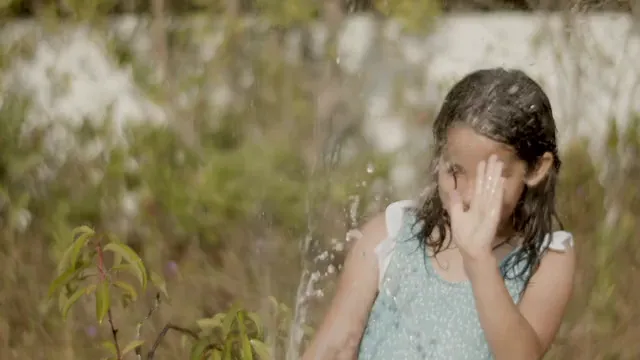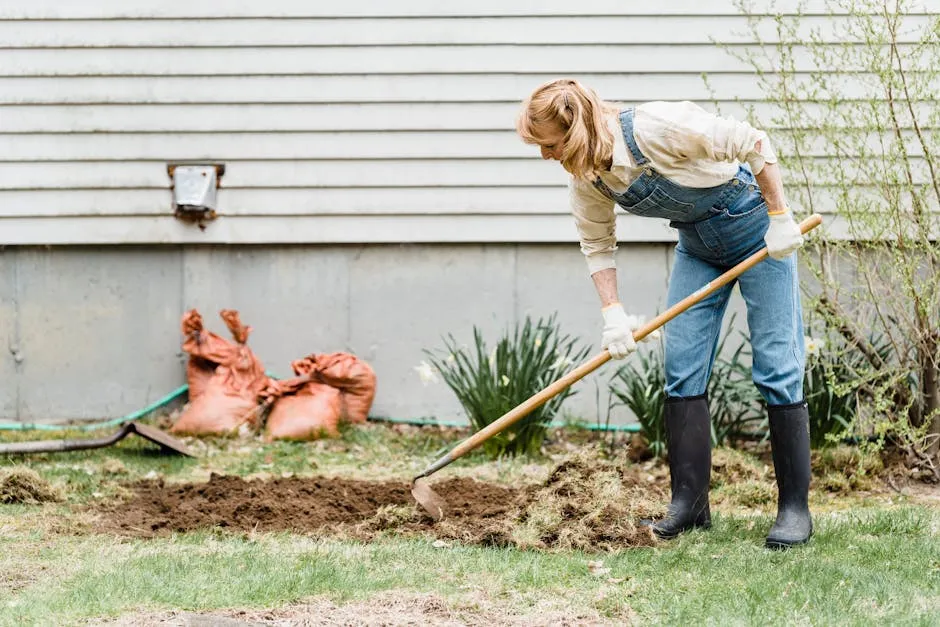

The Ultimate Guide to Garden Hose Adapters: Everything You Need to Know
Introduction
Garden hose adapters are essential for any gardener. They connect hoses to water sources and accessories, making watering efficient and hassle-free. Without them, you might struggle to reach every corner of your garden. In this guide, we’ll discuss different types of adapters, their uses, and tips for maintaining them.
Speaking of efficiency, have you checked out this Garden Hose Adapter Set? It’s a game changer for making all those connections a breeze!

Summary and Overview
Garden hose adapters are connectors that link hoses to various water sources or devices. They come in different styles, such as threaded and quick-connect options, each serving specific purposes in gardening and landscaping.
Using the right adapter can significantly boost your gardening efficiency. You can easily switch between watering tools, ensuring your plants receive the care they need. For instance, a quick-connect adapter allows for seamless transitions between a hose and a sprinkler. This versatility saves time and effort, making your gardening tasks more enjoyable.
By understanding the various types and functions of garden hose adapters, you’ll be better equipped to optimize your watering system. These small tools can make a big difference in your gardening experience.
Understanding Garden Hose Adapters
What is a Garden Hose Adapter?
A garden hose adapter is a connector that links hoses to various accessories and water sources. They make your gardening tasks much easier. Imagine trying to water your plants without the right connections—frustrating, right? Adapters ensure a smooth flow of water from your hose to a nozzle, sprinkler, or other tools.
You might wonder how adapters differ from fittings and couplings. While these terms often overlap, they have distinct meanings. Adapters typically refer to connectors that allow two different sizes or types of hoses to join. Fittings are the components that connect hoses to each other or to devices. Couplings, on the other hand, are the complete assembly used to connect two hose sections together. Understanding these differences will help you choose the right parts for your watering needs.
Types of Garden Hose Adapters
Garden hose adapters come in several types, each with unique features and uses.
Threaded Adapters are the most common. They have male and female threads that screw together tightly. This type is perfect for securing hoses to faucets or other accessories.
Quick-Connect Adapters offer convenience. They allow you to attach and detach hoses quickly without screwing or unscrewing. Just push or pull to connect! This is ideal for busy gardeners who switch tools often.
If you’re looking for a reliable option, check out these Quick Connect Garden Hose Fittings that make switching a breeze!

Multi-Function Adapters combine various functionalities. They can connect hoses of different sizes and types, allowing for greater versatility. These are great for those who have multiple watering tools.
Choosing the right adapter depends on your specific gardening tasks. Whether you need to quickly switch hoses or connect to varying sizes, having the right adapter makes all the difference. This selection enhances your gardening efficiency, saving you time and effort.
Materials Used in Garden Hose Adapters
When choosing a garden hose adapter, the material matters. Common options include plastic, brass, and aluminum. Each has its benefits and drawbacks.
Plastic adapters are lightweight and cost-effective. They resist corrosion but can crack in extreme temperatures. If you’re in a region with harsh winters, consider this downside.
Brass is known for durability. It withstands wear and tear better than plastic. However, brass can be pricier. It’s also important to note that some brass products may contain lead. Look for lead-free options to ensure safety, especially if using for drinking water. You can find quality Brass Garden Hose Adapters that are lead-free for peace of mind.

Aluminum adapters offer a middle ground. They are lightweight and resistant to rust. However, they can bend or dent more easily than brass. This could lead to leaks if not handled carefully.
In summary, each material has its trade-offs. Your choice depends on budget, durability needs, and safety considerations.
Selecting the Right Garden Hose Adapter
Compatibility with Hose Sizes
Choosing the right garden hose adapter hinges on the size compatibility. Hoses typically come in standard sizes like 1/2”, 5/8”, and 3/4”. Using an incompatible adapter can lead to frustrating leaks or disconnections.
To measure your hose size, start by checking the diameter. Use a tape measure around the hose. If you have a tape measure, simply measure the diameter directly.
Always match the hose size to the adapter. A snug fit prevents water from escaping, ensuring efficient watering. Don’t skip this step—it can save you from messy leaks!
Getting the right size makes a noticeable difference in your watering setup. It allows you to enjoy a smooth gardening experience without interruptions.
Choosing the Right Adapter for Specific Uses
Selecting the right garden hose adapter can make all the difference in your gardening tasks. First, think about your watering needs. Are you using a nozzle, sprinkler, or drip irrigation system? Each of these tools may require a different type of adapter for optimal performance.
For instance, if you frequently switch between watering accessories, a quick-connect adapter is ideal. This allows for fast changes without the hassle of screwing and unscrewing. On the other hand, threaded adapters provide a secure fit for more permanent connections, like attaching a hose to a faucet.
Next, consider the pressure requirements of your tools. Some devices need higher pressure to function effectively. Ensure that your adapter can handle the necessary pressure to avoid leaks or bursts. Always check the specifications of both the adapter and the watering tool.
To enhance your gardening efficiency, consider using a Heavy Duty Garden Hose Connector that can handle the pressure! It’s built to last and makes your watering tasks much easier.

Matching adapters with specific tools is crucial. A mismatched connection can lead to frustrating leaks or inadequate water flow. For instance, a nozzle may not fit well with a standard adapter, causing water to spray unpredictably. Refer to manufacturer guidelines when selecting adapters for your tools.
In summary, choose garden hose adapters based on your specific gardening tasks. Consider the type of accessories you use and their pressure needs. Ensuring compatibility will enhance your gardening efficiency and enjoyment.
Installing and Using Garden Hose Adapters
Step-by-Step Installation Guide
Installing a garden hose adapter correctly is essential for a leak-free experience. Start by ensuring you have the right tools. You typically only need your hands, but a wrench can help if the connection is tight.
- Clean the Threads: Before installation, clean the threads on both the hose and the adapter. This ensures a better seal and prevents dirt from causing leaks.
- Attach the Adapter: Screw the adapter onto the hose. If it’s a threaded connection, turn it clockwise until it feels snug. Avoid over-tightening, which can damage the threads.
- Connect to the Water Source: Next, attach the other end of the adapter to your faucet or watering tool. Again, ensure a snug fit without excessive force.
- Check for Leaks: Once everything is connected, turn on the water slowly. This helps you identify any leaks that may occur. If you notice any, gently tighten the connection further.
- Use a Washer: For added protection against leaks, consider using a rubber washer in the connection. This small detail can significantly enhance the seal.
Common errors to avoid include not cleaning threads or over-tightening connections. Both can lead to frustrating leaks. By following these steps, you’ll enjoy a smooth watering experience every time.

Troubleshooting Common Issues
Garden hose adapters can sometimes cause headaches. Have you ever noticed leaks or struggled to connect them? Let’s tackle these issues together.
One of the most common problems is leaks. These usually occur at the connection points. Start by checking if the adapter is seated properly. If not, unscrew it and reattach it firmly. Sometimes, a worn-out washer can cause leaks too. Replacing that washer can solve the problem in no time.
Another issue is difficulty connecting the adapter. This often happens if the threads are dirty or damaged. Make sure to clean the threads of both the hose and the adapter. If they seem worn, consider replacing the adapter for a better fit.
Lastly, if you’re facing persistent issues, it might be time to assess compatibility. Ensure your adapter matches the hose size and type. This simple check can save you a lot of frustration.
By addressing these common problems, you can keep your gardening tasks running smoothly. Remember, a little maintenance goes a long way!

Maintenance and Care for Garden Hose Adapters
Cleaning and Storage Tips
Proper care extends the lifespan of your garden hose adapters. Regular cleaning is key. After each use, rinse the adapter to remove dirt and debris. You can use a soft brush for stubborn grime. Avoid harsh chemicals that might damage the material.
Once clean, store your adapters in a dry place. Consider a toolbox or a dedicated storage container. This keeps them safe from moisture and reduces the risk of corrosion. If you’re in a region with harsh winters, bring them indoors to prevent freezing damage.
Additionally, check for any signs of wear or damage before storing. Early detection can save you from unexpected leaks. Following these simple steps ensures your adapters stay in top shape for all your gardening needs.

Signs of Wear and When to Replace
Recognizing when to replace your garden hose adapter is crucial. Start by inspecting for visible cracks or deformities. If you notice any, it’s time for a replacement.
Another sign is if the adapter frequently leaks, even after cleaning and tightening. This could indicate a worn-out washer or damaged threads. Don’t overlook these signs, as continuing to use a faulty adapter can lead to bigger problems.
Finally, consider the age of the adapter. If it’s been in use for several years, it might be wise to replace it. Regularly swapping out old adapters ensures a reliable watering system. Stay proactive to maintain your garden’s health and efficiency.
Conclusion
In summary, garden hose adapters play a vital role in efficient gardening. They make connections easy, improving your watering efforts. Choosing the right adapter and maintaining it well can enhance your gardening experience.
Remember to inspect and replace adapters as needed. A little care goes a long way in ensuring optimal performance. Happy gardening, and may your plants thrive with the right connections!
Also, while you’re at it, consider picking up a Garden Hose Repair Kit to keep your hoses in top shape!
Please let us know what you think about our content by leaving a comment down below!
Thank you for reading till here 🙂
All images from Pexels



